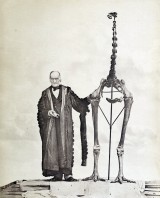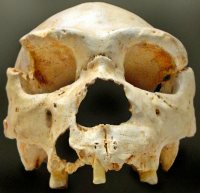James J. S. Johnson, J.D., Th.D., never disappoints. If haven’t come across him before, and can’t figure it out from the degrees included in his authorship credit, he is the ICR’s main source of bizarre legal analogies, although he has also taken to (usually viking-related) history at times. For his column in the August edition of ICR’s monthly newsletter Acts & Facts he has an article titled “One Bankruptcy, Many Adversaries“:
Theistic evolution is like a mega-bankruptcy case containing an almost countless number of adversaries and contests, like piecemeal mini-lawsuits that in aggregate address smaller conflicts within a large-scale mess. Within this big picture it’s important to keep in mind that every small-scale “contested matter” and every “adversary” conflict is an important opportunity to advocate for truth.
I bring this up not because I intend to go through it in any detail, but because it’s funny. I can’t quite tell whether his argument is that “theistic evolution” is under attack from all sides, or that it is important to attack it from every angle, or indeed that he just wanted to call it “bankrupt” – mega-bankrupt even – but then had to waffle on for a few paragraphs to justify publication this month.
It could well be the latter – he runs out of courtroom trivia mid-way, and has to turn to martial metaphors for aid:
A long war is composed of several strategically influential battles, connected to a network of contributory skirmishes. Likewise, countering the anti-Genesis teachings of theistic evolution involves a complex combination of small-scale opportunities to promote the Genesis record as part of the defense of the faith.
You get the idea – or rather, you don’t. Isn’t he wonderful?




